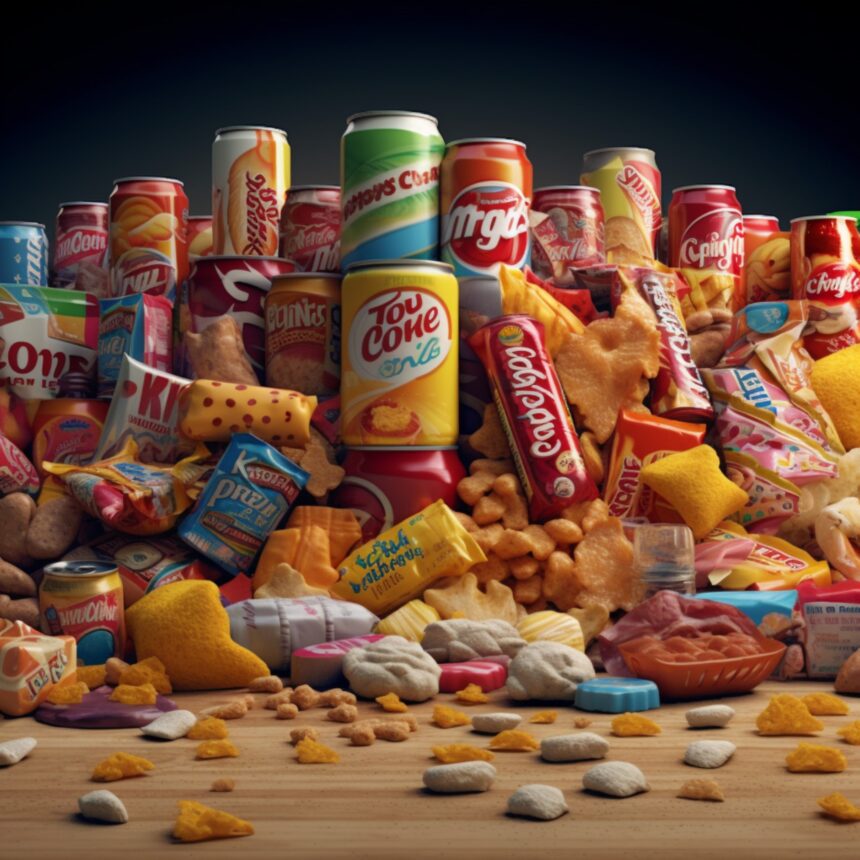Ultra processed foods (UPFs) are everywhere—fast, cheap, and engineered to be hard to resist. This guide explains what counts as UPF, what the best evidence shows, and how to reduce them with practical swaps you can keep up for months, not days.

At a glance
- NOVA classifies ultra processed foods as industrial formulations with additives and little intact food.
- High UPF intake links with worse health outcomes in large cohorts; a controlled feeding trial also found poorer weight outcomes vs minimally processed meals.
- Policy bodies are moving toward guidance; you don’t need bans—swaps and routine changes work better.
What are ultra processed foods (and what isn’t)?
The NOVA classification groups foods by degree of processing—unprocessed/minimally processed, culinary ingredients, processed foods, and ultra processed foods (UPFs). UPFs are usually built from refined ingredients (starches, added sugars, seed oils), then layered with additives like flavor enhancers, colorings, emulsifiers, and stabilizers. Common examples: sugary soft drinks, packaged sweets, instant noodles, flavored chips, reconstituted meats, many ready-to-eat desserts.
Not all “processed” foods are a problem. Canned beans, frozen veg, plain yogurt, and wholegrain bread can support a healthy pattern. The issue is a high reliance on UPFs, not occasional use.
What the evidence actually says
- Consistent associations: Large umbrella reviews and prospective cohorts link higher UPF exposure with increased risk across many outcomes, especially cardiometabolic disease and all-cause mortality.
- Randomized trial signal: In a crossover feeding trial that kept healthy-eating guidelines constant, people ate more and lost less weight on UPF meals than on minimally processed meals—likely due to palatability, energy density, texture, and eating rate.
- Guidance is forming: WHO has initiated work toward a global guideline on UPF consumption; Europe is exploring policy levers.
How to spot ultra processed foods on a label
Scan the ingredient list. Flags include multiple sugars (glucose syrup, maltodextrin), refined starches, artificial sweeteners, flavor enhancers, colorings, and emulsifiers (e.g., polysorbate, carboxymethylcellulose). If the first three ingredients are refined flour/sugar/oil and most items aren’t kitchen staples, you are likely in UPF territory. Use front-of-pack “traffic lights” and nutrition panels to compare salt, sugars, and saturated fat.

11 proven ways to cut back on ultra processed foods
1) Swap categories, not your life
Replace like-for-like: sparkling water for soda; plain yogurt + fruit for sweetened yogurts; nuts or air-popped popcorn for chips; wholegrain toast + eggs for sugary breakfast bars. Keep convenience, change the default.
2) Build a 12-item “no-thinking” pantry
Stock anchors that assemble fast: canned beans, tinned fish, eggs, wholegrain wraps, frozen veg, tomatoes, oats, olive oil, garlic, onions, herbs, lemons. These shortcuts help you cook in minutes.
3) Cook once, eat twice
Batch one base (bean-veg chili; roast chicken + veg) and turn it into two dinners and two lunches. Decision fatigue drives many ultra processed foods purchases; this move kills the 9pm takeaway reflex.
4) Upgrade breakfast and snacks
Options: overnight oats with fruit; plain yogurt + nuts; eggs + greens; fruit + cheese; hummus + carrots. Aim for protein + fiber for satiety and steadier energy.
5) Crowd out with “1 protein + 2 plants”
Center each meal on a protein and two plants (veg/legume/wholegrain). Add olive oil, spices, or salsa for flavor. This combo makes UPFs less tempting without bans.
6) Make hyper-palatable foods less “hyper”
Serve chips in a small bowl, eat at a table, slow the eating rate, and pair with protein. The food can be the same; the context shifts intake down.
7) Default to “plain + flavor it”
Buy plain basics—oats, yogurt, seltzer, nut butters—then add fruit, cinnamon, cocoa, or lemon. You control sugar and additives and keep convenience.
8) Plan for “tired nights”
When you’re exhausted, you’ll reach for ultra processed foods. Keep a 15-minute fallback: pre-washed salad + rotisserie chicken + olive oil/lemon; eggs + wholegrain toast + frozen veg; soup + beans + greens.
9) Smart shopping order
Hit produce, proteins, and whole grains first, then the middle aisles. Shop with a short list. If a UPF comes home, assume you will eat it—so buy the smallest package you can live with.
10) Track one metric for four weeks
Pick one: “meals cooked at home,” “servings of plants,” or “additives per day.” Any one of these, if improved, reduces UPF reliance without extra effort.
11) Use labels to make the best of what’s available
When you can’t avoid ultra processed foods, choose the better option: lower sodium, less added sugar, more fiber, and shorter ingredient lists. Keep portions modest and pair with protein and plants.
Common questions
Do I need to quit UPFs entirely? No. The strongest signals are for patterns of high intake. Cutting frequency and portion size, and swapping to minimally processed choices, delivers most of the benefit.
Are some UPFs okay? Definitions can lump helpful items with less helpful ones. Use labels and your goals. Plain yogurt, canned beans, and wholegrain bread often support a healthy pattern even if they’re “processed.”
Is the science settled? The big picture is consistent, but details keep evolving. Mechanisms include energy density, texture, eating rate, and additives. Policy work is ongoing; you don’t need to wait to make simple changes.
One-week “cut-back” plan (copy, paste, edit)
- Breakfasts: overnight oats; eggs + greens; yogurt + fruit + nuts.
- Lunches: bean-grain bowls; tuna + wholegrain wraps; lentil soup + salad.
- Dinners: chili over brown rice; sheet-pan chicken + veg; salmon + potatoes + broccoli.
- Snacks: fruit; nuts; carrots + hummus; popcorn.
Related reads on Bulktrends
- Immune Health Basics: 12 Evidence-Backed Habits
- Gut Health 101: Improve Digestion & Overall Health
- The Science of Sleep: How to Get Better Rest
- The Impact of Stress on Your Body and Mind
Authoritative sources
- FAO — NOVA: Ultra-processed foods, diet quality & health
- BMJ 2024 — UPF exposure & adverse outcomes (umbrella review)
- BMJ 2024 — UPF intake & all-cause mortality
- Nature Medicine 2025 — UPF vs minimally processed trial
- WHO — Call for UPF guideline experts
- NHS — Processed foods & healthy diet
Educational content, not medical advice. Dietary needs vary—check labels and talk to your clinician if you have medical conditions or special requirements.






